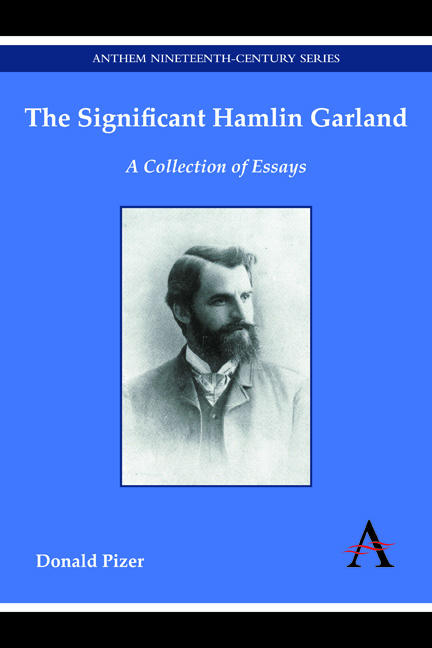Book contents
- Frontmatter
- Dedication
- Contents
- Preface
- A Selected Secondary Bibliography
- Editorial Note and Acknowledgments
- Part I THE RADICAL YEARS
- Part II THE MAJOR WORKS
- 5 Main-Travelled Roads
- 6 Main-Travelled Roads Revisited
- 7 Rose of Dutcher's Coolly
- 8 Sexuality in Rose of Dutcher's Coolly
- 9 A Son of the Middle Border
- Notes
- Index
8 - Sexuality in Rose of Dutcher's Coolly
from Part II - THE MAJOR WORKS
Published online by Cambridge University Press: 05 November 2014
- Frontmatter
- Dedication
- Contents
- Preface
- A Selected Secondary Bibliography
- Editorial Note and Acknowledgments
- Part I THE RADICAL YEARS
- Part II THE MAJOR WORKS
- 5 Main-Travelled Roads
- 6 Main-Travelled Roads Revisited
- 7 Rose of Dutcher's Coolly
- 8 Sexuality in Rose of Dutcher's Coolly
- 9 A Son of the Middle Border
- Notes
- Index
Summary
The history of the creation of Rose of Dutcher's Coolly is one of older ideas reshaped in response to fresh circumstances. Garland had made notes in 1890 for a story about a Wisconsin farm girl whose intellectual development renders her dissatisfied with farm life, and during 1892 and 1893 he wrote portions of the story involving Rose on the farm and at the University of Wisconsin. He was perhaps initially led to explore this theme by his observation of the childhood of his younger sister Jessie, a vibrant tom-boy and later an intelligent young woman, and was further motivated when Jessie died tragically young in late 1890. It was only in late 1894 or early 1895, however, that he decided to bring Rose after graduation not to New England, as he had originally planned, but to Chicago, which he viewed as his future home. The work now expanded from a long short story to a full novel, the final half of which is set in Chicago. And now the central issues raised in the earlier portions set on the farm and in Madison are resolved not only in the context of Chicago but with its active participation and aid.
Garland had been deeply moved in late 1889 by the plays of Henrik Ibsen and the American dramatist James A. Herne which explored such feminist themes as the double standard of sexual conduct and the barriers facing women seeking self-determination in a male-dominated society.
- Type
- Chapter
- Information
- The Significant Hamlin GarlandA Collection of Essays, pp. 79 - 86Publisher: Anthem PressPrint publication year: 2014



